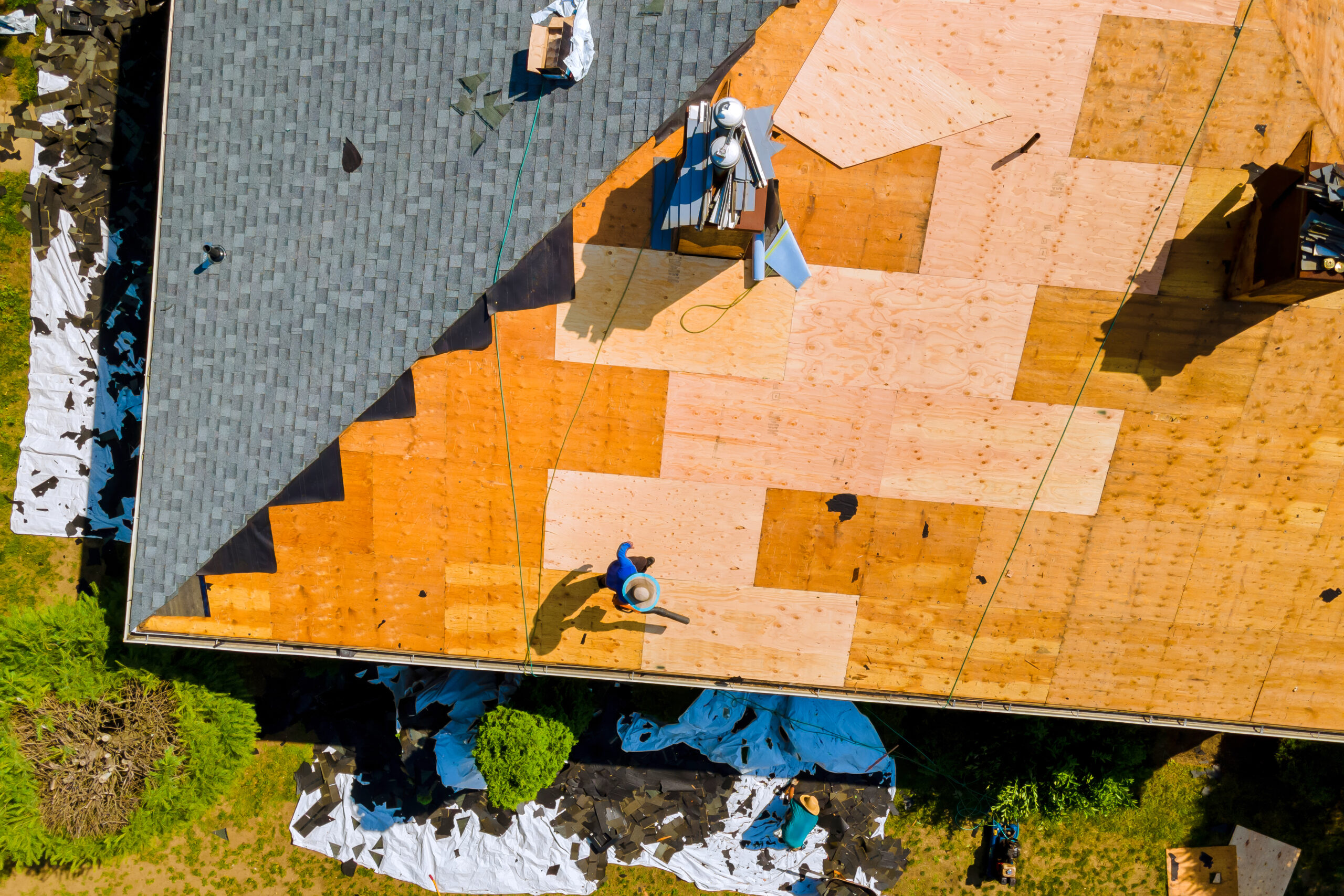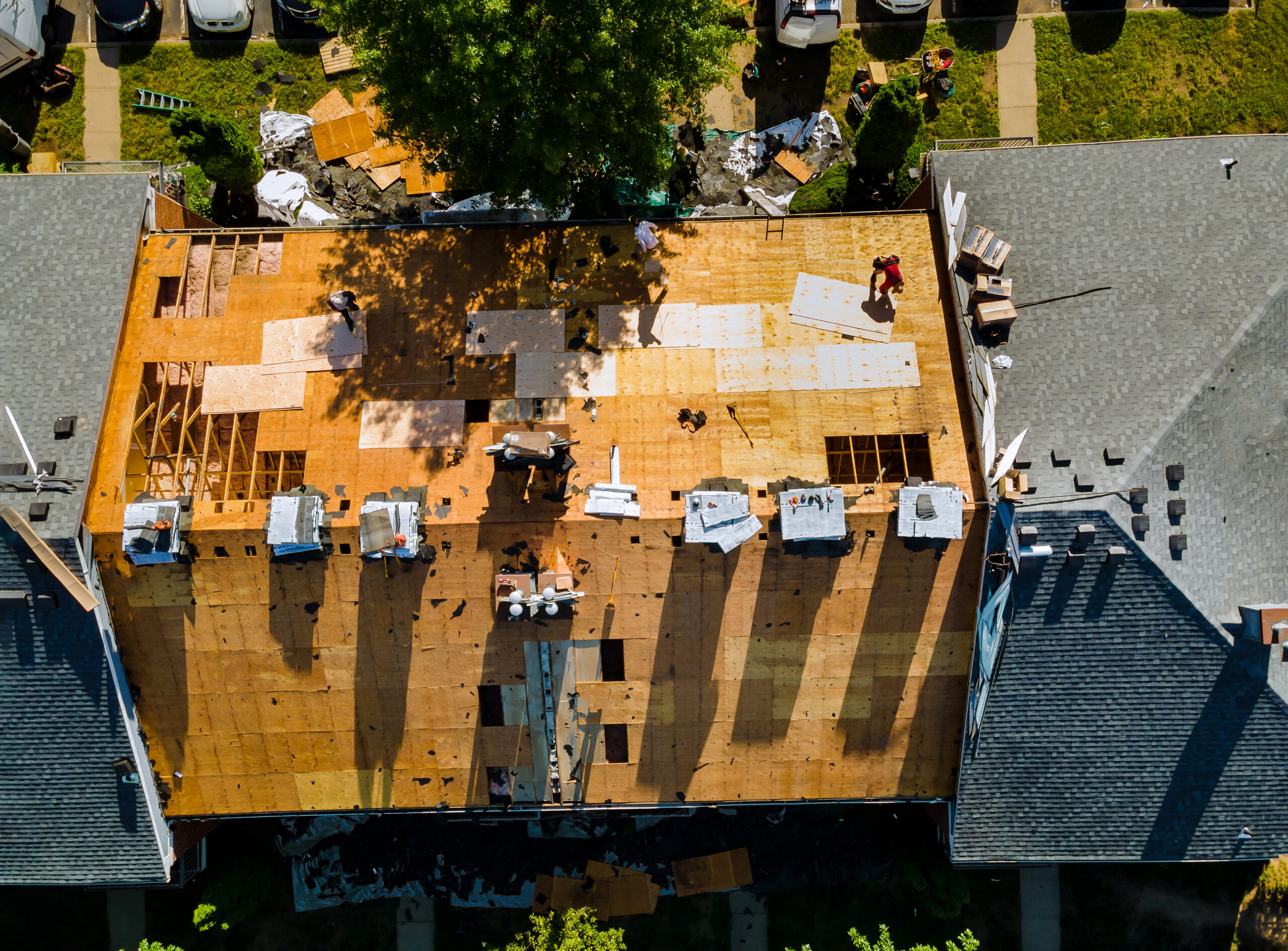Is Your Roof Showing Its Age?
Your roof is your home’s first line of defense against the elements. It works tirelessly, day in and day out, to protect you, your family, and your belongings from rain, snow, wind, and the harsh summer sun. But like all things, even the sturdiest roof has a lifespan. For homeowners with asphalt shingle roofs – the most common type across the United States – there comes a time when you’ll notice signs of wear and tear. This inevitably leads to a crucial question: is it time for a repair, or are you looking at a full roof replacement?
This isn’t always an easy decision. A repair might seem like the more budget-friendly option upfront, but if your roof is truly nearing the end of its functional life, a repair could be a temporary fix for a recurring problem. Conversely, a premature replacement can be an unnecessary expense. Understanding the signs of an aging roof, the factors that influence its longevity, and the pros and cons of repairing versus replacing will help you make an informed and cost-effective decision for your home.
Understanding Your Asphalt Shingle Roof & Its Lifespan
Asphalt shingles themselves come in a few varieties, primarily 3-tab shingles and architectural (or dimensional) shingles.
- 3-tab shingles are lighter, thinner, and have a flat appearance. They are generally the more economical option and typically have a lifespan of 15-20 years, depending on conditions.
- Architectural shingles are thicker, heavier, and create a more textured, dimensional look. They are more durable and often come with longer warranties, typically lasting 25-30 years, or even more for premium versions.
Several factors beyond the shingle type itself influence how long your asphalt roof will last:
- Climate and Weather Exposure: Homes in areas with extreme weather conditions – intense sun, heavy snowfall, frequent hailstorms, or high winds – will naturally see their roofs degrade faster. Coastal areas with salt spray can also accelerate wear.
- Attic Ventilation: Proper attic ventilation is crucial. A poorly ventilated attic can trap heat and moisture, leading to shingles deteriorating from the underside, ice dam formation in winter, and increased energy costs.
- Installation Quality: A roof that was improperly installed from the start will likely fail prematurely. This includes issues like inadequate nailing, improper flashing installation, or incorrect shingle alignment.
- Maintenance History: Regular inspections and proactive maintenance, such as cleaning gutters, removing debris, and addressing minor issues promptly, can significantly extend a roof’s life. Conversely, neglect can shorten it.
- Tree Coverage: Overhanging tree limbs can scrape against shingles, causing granule loss and physical damage. They also drop leaves and needles that can trap moisture and promote algae or moss growth.
Telltale Signs Your Roof is Aging (And Needs Attention)
As your roof ages, it will start to send signals that it needs attention. Recognizing these signs early can save you from more extensive and expensive damage down the road.
- Age of the Roof: This is the most straightforward indicator. If your 3-tab shingle roof is approaching 20 years, or your architectural shingle roof is nearing 25-30 years (or you don’t know its age but the home is older), it’s time to start paying closer attention and budgeting for potential replacement.
- Curling or Clawing Shingles: As shingles age and lose their flexibility, their edges may begin to curl upwards (curling) or the tabs may start to lift in the middle (clawing). This makes them vulnerable to wind uplift and water penetration.
- Cracked Shingles: Years of thermal cycling (expansion and contraction due to temperature changes) and UV exposure can cause shingles to crack. Wind damage can also lead to cracking. Cracked shingles are direct pathways for water.
- Missing Shingles: Obvious bald spots on your roof where shingles have blown off are a clear sign of a problem. This often happens after storms but can also indicate failing adhesive on older shingles.
- Excessive Granule Loss: Asphalt shingles are coated with granules that protect them from UV rays and add to their fire resistance. As the roof ages, these granules wear away. You might find them accumulating in your gutters or at the base of your downspouts. While some granule loss is normal, especially with a new roof, excessive loss indicates the shingles are becoming brittle and less protective.
- Dark Streaks or Algae/Moss Growth: While often a cosmetic issue, dark streaks (typically blue-green algae) or moss growth can indicate moisture retention on the roof surface. Moss can be particularly damaging as it holds water against the shingles and can lift them over time.
- Sagging Roof Deck: A sagging or droopy appearance in your roofline is a serious red flag. It could indicate structural issues with the roof deck, possibly due to trapped moisture and rot. This requires immediate professional attention.
- Leaks and Water Stains: This is perhaps the most urgent sign. Water stains on your ceilings or walls, dampness in your attic, or active drips are clear indicators that your roof’s integrity is compromised.
- Increased Energy Bills: If your energy bills have been slowly creeping up, a deteriorating roof and inadequate attic insulation could be contributing factors. A less effective roof can lead to heat loss in winter and heat gain in summer.
- Blistering Shingles: Trapped moisture within the shingle can cause it to “blister” or look like bubbles on the surface. These blisters can eventually pop, leading to granule loss and exposure of the asphalt.
The Case for Repair: When Can You Save Your Roof (And Your Wallet)?
A full roof replacement is a significant investment, so if a repair can effectively solve the problem and extend the life of your current roof, it’s often the preferred route. Repair is generally a viable option when:
- The Damage is Localized: If you have a few missing or damaged shingles from a recent storm, or a leak around a vent pipe or chimney flashing, these isolated issues can often be repaired without needing to address the entire roof.
- Your Roof is Relatively Young: If your roof is well within its expected lifespan (e.g., less than 10-15 years old for architectural shingles) and the damage isn’t widespread, repairs are usually more cost-effective.
- The Underlying Deck is Sound: If the roof deck (the wooden structure beneath the shingles) is still in good condition and there’s no evidence of rot or sagging, repairs to the shingle layer are more straightforward.
- You Have Matching Shingles: For aesthetic reasons, and sometimes for proper sealing, having access to matching shingles is important for repairs. This can be an issue for older roofs where the original shingle color or style has been discontinued.
However, it’s important to note that repeated repairs to an old roof can become a “money pit,” eventually costing more than a replacement would have.
When Replacement Becomes Necessary: Investing in Your Home’s Future
Sometimes, a repair is just a band-aid on a larger problem. A full roof replacement becomes the more sensible, and often more economical in the long run, option when:
- The Roof is Near or Past its Expected Lifespan: Even if there are no major visible issues yet, an old roof is living on borrowed time. Proactive replacement can prevent catastrophic failure and a stressful emergency situation.
- Widespread Damage: If more than 25-30% of your roof is damaged, or if you have extensive granule loss, curling, and cracking across multiple sections, a replacement is typically recommended.
- Multiple Leaks: One or two isolated leaks might be repairable, but if you’re chasing leaks all over the roof, it’s a sign of systemic failure.
- Significant Granule Loss: As mentioned, granules are key to shingle protection. Once they’re largely gone, the shingles will deteriorate rapidly.
- Soft or Rotting Roof Deck: If a professional inspection reveals that the roof deck is soft, spongy, or shows signs of rot, the decking will need to be replaced, which usually accompanies a full shingle replacement.
- Previous Poor Installation: If the existing roof was installed poorly, simply repairing sections might not address underlying issues like improper nailing patterns or inadequate flashing.
- You’re Planning to Sell: A new roof can be a significant selling point and can increase your home’s value. Many buyers are wary of purchasing a home with an old roof.
The Benefits of a New Roof: More Than Just Shelter
While the cost of a new roof is considerable, the benefits are equally significant:
- Enhanced Protection and Peace of Mind: A new roof provides superior protection against the elements, reducing the risk of leaks and water damage for decades to come.
- Increased Home Value: A new roof is a major selling point and can yield a good return on investment when you decide to sell your home.
- Improved Energy Efficiency: Modern roofing materials and installation techniques, especially when paired with proper attic ventilation and insulation upgrades, can help reduce heating and cooling costs.
- Better Curb Appeal: A new roof dramatically improves the appearance of your home, boosting its curb appeal.
- New Warranties: A new roof comes with manufacturer warranties on the materials and often a workmanship warranty from the installer, offering protection for your investment.
- Updated to Current Building Codes: Roofing codes can change over time. A replacement ensures your roof meets the latest safety and performance standards.
Making the Right Decision: Factors to Weigh
Deciding between repair and replacement boils down to a careful assessment of several factors:
- Cost: Get quotes for both repair options and a full replacement to compare the financial implications. Consider the short-term expense versus the long-term value.
- Extent and Nature of Damage: Is it isolated or widespread? Is it superficial or indicative of deeper problems?
- Age of the Roof: This is a primary consideration. An older roof is often a better candidate for replacement.
- Future Plans for the Home: If you plan to sell in the next few years, a new roof might be a wise investment. If you plan to stay long-term, a durable replacement offers lasting peace of mind.
- Budget: While cost shouldn’t be the only factor, your current budget will play a role. However, financing options are often available for roof replacements.
The Unwavering Importance of a Professional Assessment
While this guide provides valuable information, nothing can replace the expertise of a qualified and reputable roofing contractor. A professional can perform a thorough inspection, assess the condition of your shingles, flashing, and underlying deck, identify the root cause of any problems, and provide you with an honest recommendation based on their findings and your specific situation.
They can help you understand the nuances of your roof’s condition that might not be apparent to an untrained eye. Look for a contractor who is licensed, insured, has good local references, and provides a detailed, written estimate. Don’t be afraid to get multiple opinions, especially if a full replacement is being recommended.
Conclusion: Protecting Your Investment
Your roof is a critical component of your home’s structure and overall well-being. Recognizing the signs of aging and damage, and understanding when to opt for a strategic repair versus a comprehensive replacement, is key to protecting your investment and ensuring your home remains safe and secure for years to come. By carefully evaluating your roof’s condition, considering its age, and seeking professional advice, you can make a confident decision that safeguards your home and your finances.
Don’t wait until a small issue becomes a major headache. If you suspect your asphalt shingle roof is showing its age, contact us today for a professional, no-obligation inspection. Our experienced team can help you determine the best course of action, whether it’s a targeted repair or a high-quality roof replacement, ensuring your home is protected for the seasons ahead.





